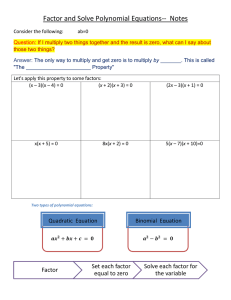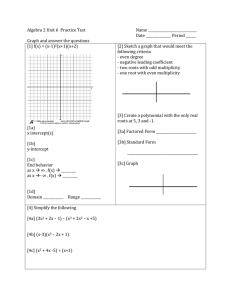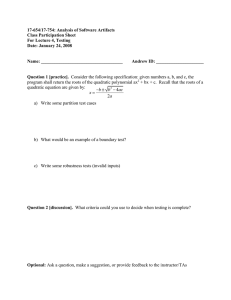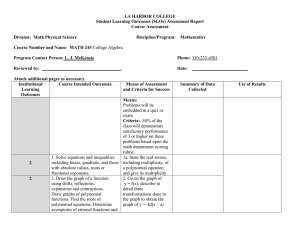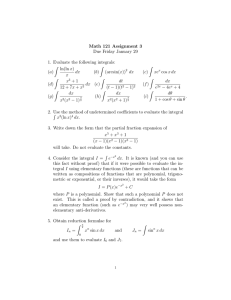DIAGONALIZATION Diagonalizing a square matrix A is finding a
advertisement
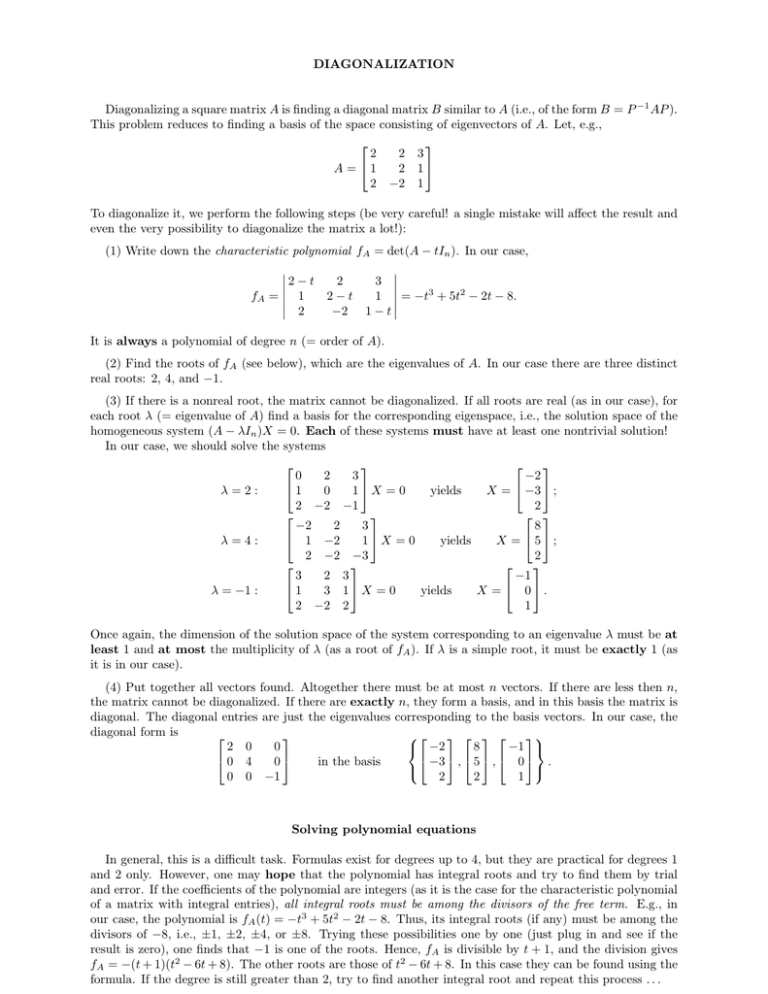
DIAGONALIZATION Diagonalizing a square matrix A is finding a diagonal matrix B similar to A (i.e., of the form B = P −1 AP ). This problem reduces to finding a basis of the space consisting of eigenvectors of A. Let, e.g., 2 A = 1 2 2 3 2 1 −2 1 To diagonalize it, we perform the following steps (be very careful! a single mistake will affect the result and even the very possibility to diagonalize the matrix a lot!): (1) Write down the characteristic polynomial fA = det(A − tIn ). In our case, ¯ ¯ ¯2 − t 2 3 ¯¯ ¯ 2−t 1 ¯¯ = −t3 + 5t2 − 2t − 8. fA = ¯¯ 1 ¯ 2 −2 1 − t ¯ It is always a polynomial of degree n (= order of A). (2) Find the roots of fA (see below), which are the eigenvalues of A. In our case there are three distinct real roots: 2, 4, and −1. (3) If there is a nonreal root, the matrix cannot be diagonalized. If all roots are real (as in our case), for each root λ (= eigenvalue of A) find a basis for the corresponding eigenspace, i.e., the solution space of the homogeneous system (A − λIn )X = 0. Each of these systems must have at least one nontrivial solution! In our case, we should solve the systems −2 0 2 3 1 yields X = −3 ; 0 1X = 0 2 2 −2 −1 −2 2 3 8 1 −2 1X = 0 yields X = 5; 2 −2 −3 2 3 2 3 −1 1 3 1X = 0 yields X = 0. 2 −2 2 1 λ=2: λ=4: λ = −1 : Once again, the dimension of the solution space of the system corresponding to an eigenvalue λ must be at least 1 and at most the multiplicity of λ (as a root of fA ). If λ is a simple root, it must be exactly 1 (as it is in our case). (4) Put together all vectors found. Altogether there must be at most n vectors. If there are less then n, the matrix cannot be diagonalized. If there are exactly n, they form a basis, and in this basis the matrix is diagonal. The diagonal entries are just the eigenvalues corresponding to the basis vectors. In our case, the diagonal form is 2 0 0 8 −1 −2 0 4 −3 , 5 , 0 . 0 in the basis 0 0 −1 2 2 1 Solving polynomial equations In general, this is a difficult task. Formulas exist for degrees up to 4, but they are practical for degrees 1 and 2 only. However, one may hope that the polynomial has integral roots and try to find them by trial and error. If the coefficients of the polynomial are integers (as it is the case for the characteristic polynomial of a matrix with integral entries), all integral roots must be among the divisors of the free term. E.g., in our case, the polynomial is fA (t) = −t3 + 5t2 − 2t − 8. Thus, its integral roots (if any) must be among the divisors of −8, i.e., ±1, ±2, ±4, or ±8. Trying these possibilities one by one (just plug in and see if the result is zero), one finds that −1 is one of the roots. Hence, fA is divisible by t + 1, and the division gives fA = −(t + 1)(t2 − 6t + 8). The other roots are those of t2 − 6t + 8. In this case they can be found using the formula. If the degree is still greater than 2, try to find another integral root and repeat this process . . .

